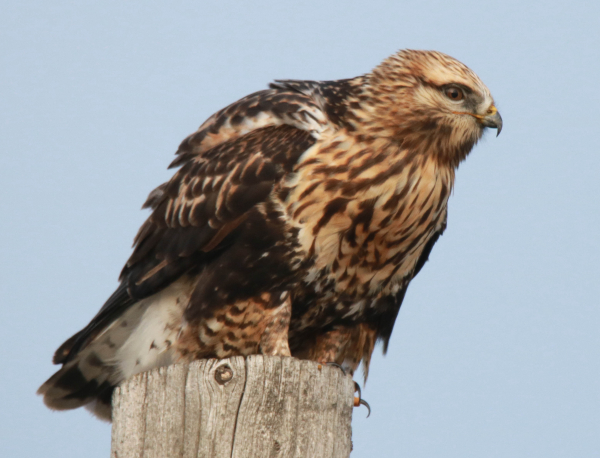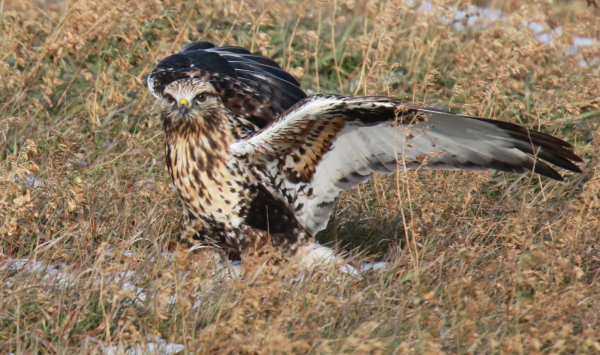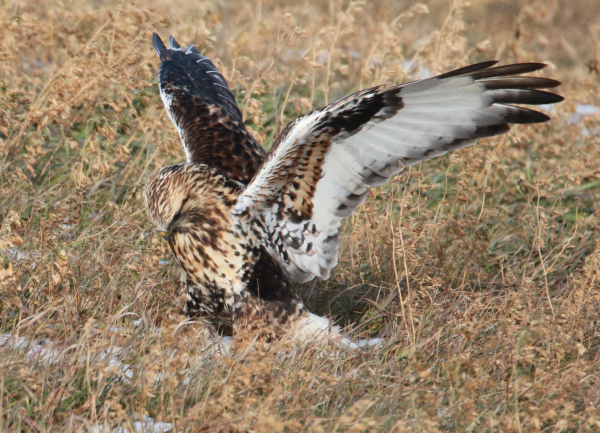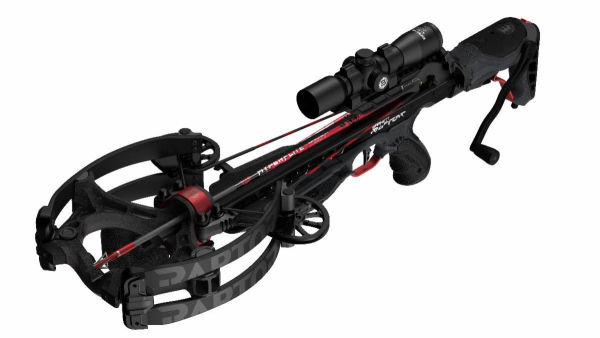An Arctic Ambassador

After 3 days of rain, snow, and intense wind, as the sun tried to break through the light veil of clouds I was interested in what might have ‘blown in’ on the windless Sunday afternoon. Just a half-mile south of my office, even before reaching ice-covered Melody’s Marsh I could see a hawk perched atop a lone cottonwood along the road – likely a Rough-legged Hawk fresh from the Arctic. You never know how a bird will react as you approach it, but this colorful raptor’s attention was focused in the opposite direction, so I slipped into the best location to take advantage of the afternoon sunlight, which was filtered by an ever-changing veil of light clouds.
This Arctic hawk proved to be one of those remarkable birds we all hope for when we encounter a bird with photographic potential – an individual that I like to call a “species ambassador” – a bird that allows you to spend time with it and photograph at will, as though you were invisible. In reality though, the hawk was accepting a white van with a zoom lens poking out of an open window. The van was obviously larger than a person, but less concerning than me standing in the same position.

As a result of the Rough-leg’s trust, I followed it during its hunting forays at 3 different perches within 100 yards of one another. During that period the Arctic visitor made 4 short hunting strikes, 3 of which were successful – a pretty impressive percentage. That gave me a chance to photograph the hawk perched in a number of positions, as well as in flight, and on the ground with prey. As a photographer, it’s important to spend extra time with these trusting birds when you find them, to try to get the most out of the shared time.
You couldn’t ask for a better photo opportunity, and the conditions were good, but not great, due to varied levels of light cloud cover. But that just made me monitor the varying hues of light that added brighter color or muted colors, and I emphasized taking photos when the sunlight was on the brighter side of the light spectrum.

Throughout the photo period, which lasted about an hour, I monitored my camera’s tech settings to make sure I was getting a fast enough shutter speed in case the bird took flight. Starting with an ISO of 400 and an aperture of f7 I appreciated shutter speeds of 1/1000 to 1/1600 of a second. As the sunlight began to fade I turned the ISO up to 800, which helped increase the shutter speed, but only to 1/640 – but that was plenty fast for a perched bird fluffing its plumage a bit.
The flight photos didn’t turn out very well, not because of tech settings but because of chance more than any other reason. I took several flight photos but none stood out that I thought were worthy of sharing with you. That happens sometimes, but the other photos offer some nice insights into the potential of the kinds of close-focus images you can take when you find a true species ambassador.

Article and photographs by Paul Konrad
Share your bird photos and birding experiences at editorstbw2@gmail.com





